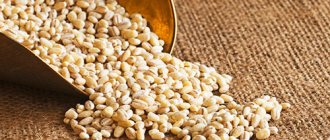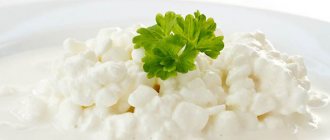Lactostasis is a rather unpleasant and at the same time common problem among young nursing mothers. It brings a lot of discomfort to the process of feeding the baby, moreover, it can be complicated by mastitis, which ultimately leads to the cessation of lactation. Therefore, it is extremely important to promptly prevent and treat lactostasis. And although the main direction of treatment is the correction of the feeding process itself, no less important is symptomatic therapy that alleviates the woman’s condition, which is a compress for lactostasis.
How does a compress work for lactostasis?
Thanks to the use of a vodka compress, the clogged duct of the mammary gland receives gentle heating, which produces the following actions:
- eliminates pain;
- softens the seal;
- relieves spasm of the mammary duct;
- relieves the inflammatory process;
- normalizes milk flow.
If you start treatment with a vodka compress from the very first manifestations of the disease, you can eliminate the disease completely within 1-2 days.
Prevention of lactostasis
To ensure that the joy of motherhood is not overshadowed by such a problem as lactostasis, you need to adhere to the following rules:
- observe the drinking regime, control fluid intake - the more fluid you drink, the more milk will flow. You can drink, but in small portions (no more than 150 ml at a time). The liquid should be at room temperature;
- Be sure to express accumulated milk. If the child does not completely empty the breast, then in between feedings it is advisable to apply cabbage leaves to the mammary glands;
- learn how to properly attach your baby so that he can completely empty the mammary glands. The baby should completely grasp the nipple and areola. The child should be positioned towards the sore breast with the chin towards the site of the lump;
- feed the baby on demand, not according to a schedule;
- protect yourself from hypothermia, cover your chest in cold weather;
- sleep on your back, not on your stomach, so that the glands are not compressed and seals do not form;
- choose the right bra size so that it does not squeeze you. It is advisable to buy a special bra without wires for nursing mothers during lactation;
- protect yourself from mechanical injuries, impacts, squeezing, etc.
How to prepare alcohol for a compress
If vodka is used for the procedure, then there is no need to prepare it in any way, since its strength cannot harm the delicate tissues of the mammary gland. If you decide to use medical alcohol, then it must be brought to the desired strength by diluting with boiled water. If the alcohol has a strength of 96%, it is diluted with boiled water in a ratio of 1:3, but if the strength is 70%, then it is diluted 1:2. It is very important to maintain these proportions, since if the alcohol is diluted too much, the compress will not bring results, and if it is not diluted enough, it will cause a severe burn to the delicate skin of the chest. After dilution, use the solution for a compress immediately.
Traditional medicine methods for the treatment of lactostasis
Treatment with folk remedies is highly effective, safe and can be performed independently at home.
This is extremely important if the child is small and the mother cannot leave him to go to the doctor. However, before using any home treatment method, it is recommended to consult a specialist
This will help avoid the development of dangerous complications.
The most effective traditional medicine recipes:
- Baked onion. This remedy copes well with tissue inflammation that occurs during stagnation of milk. To prepare it, you need to take a large onion, cut it into four parts right in the husk and bake until golden brown. Cool until warm and apply to the sore area for 1.5-2 hours. This procedure is recommended to be carried out three times a day until the seals completely disappear.
- Potato. Using this remedy you can get rid of swelling and pain. The potatoes should be chopped using a coarse grater, placed on a compacted area and left for 20 minutes. It is recommended to make a compress for lactostasis immediately after feeding the baby. The procedure can be performed 8-10 times a day until symptoms disappear completely.
- Rice starch. A very effective treatment method, which consists of constantly applying a starch-based paste. To prepare it, rice starch should be diluted with a small amount of water to form a thick paste. Apply to the mammary gland immediately after feeding and cover with a soft cloth. Wash off before next feeding. Continue using the product until the stagnation is completely eliminated.
- Eucalyptus. To quickly eliminate lactostasis, you can use a decoction of eucalyptus leaves. They need to be filled with water, boiled for a few minutes, and then left for another half hour. Use the resulting product as a lotion three times a day. The exposure time is 20-30 minutes.
- Tea mushroom. Using this method, you can eliminate blockage of the milk ducts in the shortest possible time. To do this, it is enough to apply a piece of mushroom to the sore spot several times a day immediately after feeding for 60-90 minutes. Continue treatment until the blockage resolves.
- Cabbage leaf. Cabbage leaf for lactostasis is one of the most effective and popular remedies. You need to beat it a little to release the juice, and then apply it to the sore spot immediately after feeding or a warm shower. You can leave it for several hours until the next feeding. Continue the procedure until complete recovery.
- Honey. Using honey ointment can relieve pain and inflammation. It is recommended to add a little olive oil to the honey, which nourishes the skin, as well as flour to give the mixture a thick consistency. Apply to the problem area 3-4 times a day.
- Cottage cheese. Lactostasis causes painful sensations at the site of compaction, which can be relieved with a compress of low-fat cottage cheese. It is enough to apply cold low-fat cottage cheese to the problem area immediately after feeding and leave for 15 minutes. This compress relieves pain and reduces swelling.
- Chamomile. It is also effective to use a compress based on chamomile. To prepare a compress, pour 2 tbsp. l. chamomile with boiling water and leave for 20 minutes. Soak a piece of cloth in the infusion and apply it to the sore breast after feeding for 30 minutes. Carry out the procedure several times a day.
Home remedies to treat milk stagnation are highly effective if you follow the recommendations and perform the treatments as often as possible. However, if no improvement is observed when using any remedy or the mother’s condition worsens, you should immediately call a doctor.
How to apply a compress for lactostasis
When using a vodka compress in treatment, it is very important to position it so that cotton wool soaked in vodka or diluted alcohol does not touch the nipples and areola.
If you do not pay attention to this, they will become severely irritated and cracked. To carry out therapy, a piece of cotton wool sufficient to warm the affected area is soaked in vodka or alcohol and lightly squeezed.
Liquid should under no circumstances flow from the cotton wool, but it should not be too dry either. Cotton wool is placed at the site of inflammation, covered with a layer of gauze and, if possible, wrapped in cling film. Depending on the location of the inflammation, it is possible to either completely wrap the chest with film, or just apply it over gauze. After this, put on a comfortable bra. Leave the compress on for 2.5 hours, no more. The procedure is carried out in the morning and evening and only after feeding.
What to do at the first signs of lactostasis?
Milk may begin to stagnate if a nursing woman for some reason does not attach the baby to the nipple in time. If some changes begin to occur in the breasts and the woman understands that stagnation of milk is to blame, she should give herself first aid - as soon as possible, attach the baby to the breast where discomfort and pain are felt. In this case, the baby should be placed facing the part of the mammary gland where there is a lump. The child will help release the glands from excess milk and the seal will resolve. If the baby completely empties the mammary gland, the lump should go away, although pain may continue for some time. If the child did not cope and did not help free the glands from milk, then the woman must help herself on her own:
- Express milk by hand . To do this, you need to support the breast that needs pumping with one hand, and with the other begin to make vibrating movements to make the milk ducts elastic and prepare them for the release of milk. Having identified and slightly stretched the nipple with your fingertips, you need to place two fingers on the areola, press your fingers to the sternum and begin to make squeezing movements. To remove milk evenly, the position of the fingers needs to be changed. To avoid damaging the mammary glands, you need to work manually for no more than 5 minutes. If a woman does everything correctly, then after manual expression the breasts should be soft, even, without lumps.
- Express milk using a breast pump (mechanical, electric). With a breast pump, the process of releasing milk is greatly facilitated. The instructions for any device will necessarily contain the entire pumping process. The main thing is to thoroughly wash your hands with soap and water before the procedure, wash the mammary glands with warm water, and immediately before installing the breast pump, massage the entire breast so that the milk flows in better.
Contraindications for vodka compress
To use this method of treating lactostasis, there are a number of contraindications that must be observed. You cannot apply a compress in cases where there are:
- purulent process in the mammary gland;
- skin injuries in the compress area;
- skin irritation in the area of the compress;
- increased body temperature;
- the risk of lactostasis turning into mastopathy.
When the disease is not advanced and all the rules for applying the compress are followed, and there are no contraindications to its use, with the help of this procedure you can cope with the disease and restore normal milk flow in an extremely short time.
Causes, prevention and main treatment of lactostasis
Lactostasis mainly develops in two cases - either if the mother feeds the baby incorrectly (incorrect feeding positions, feeding by the hour, and so on), or by nature she has intense lactation and produces much more breast milk than the baby can eat.
As a result, milk stagnates in the mammary ducts and their expansions before exiting into the nipple, which causes unpleasant sensations in the form of a feeling of fullness, burning, pain and hardening in the breast (women often describe it as an electric shock). Stagnant milk creates a good environment for the proliferation of pathogenic microorganisms and, as a consequence of lactostasis, mastitis can occur. In this case, the surrounding tissues become inflamed, and milk and bacterial breakdown products can be absorbed into the blood and cause systemic manifestations - fever and other complications.
The main direction of prevention and treatment of lactostasis is the correct choice of positions and feeding regimen (feeding at the child’s first request, frequent and plentiful).
Periodic changes in body position so that the child evenly empties all segments of the mammary gland. It is also necessary to express excess milk if it is produced in excessive quantities due to the individual characteristics of the woman.
Having followed all these recommendations, only then can you think about a compress on the chest for lactostasis to quickly relieve unpleasant symptoms in the form of pain and a feeling of fullness in the chest.
Side effects
With lactostasis, the amount of milk produced may temporarily decrease. This is fine. Frequent latching or pumping will help quickly restore lactation to its previous volume. Sometimes mothers may observe lumps or clots in fattier and thicker milk. For about a week after recovery, the affected area of the breast may remain red and tender.
Be sure to consult your doctor and do not self-medicate, as this can lead to serious consequences for your health.
Photo: Herb Ritts, Yiorgos Mavropoulos
Personal experience
When the first signs of milk stagnation appear, I follow a proven scheme.
- I take arnica granules
- Apply Traumeel ointment to the affected area
- I take a hot bath with Epsom salts (put my chest in the water)
- I gently knead my breasts when feeding.
- I apply a cold cabbage leaf to the clean skin of the chest (before applying, I hit the leaf so that it releases juice)
When all points of this scheme are followed, the unpleasant symptoms disappear.
It is important to remember several general rules: when treating congestion, bed rest (preferably with the baby at the breast), sufficient fluid intake, proper nutrition and help for the young mother around the house are recommended.
What is lactostasis
Lactostasis is a phenomenon in which the passage of milk is difficult. Stagnation can occur both directly in the nipple area and deeper in the ductal system. This effect usually occurs gradually and affects only one breast.
If lactostasis is a physical blockage of the milk exit pathways, then mastitis is how the body reacts to such situations. In such cases, as a rule, an inflammatory process occurs. Mastitis is most common in the first 2-3 weeks, but can occur at any stage of lactation. Unlike lactostasis, it occurs suddenly, but also affects only one breast.
Since over all the years of breastfeeding I managed to avoid mastitis, in this article I will only talk about lactostasis and how to treat it. If any complications arise due to lactostasis, I recommend referring to this article on the KellyMom website for theoretical knowledge. For practical help, you should immediately contact a specialist.
Be sure to consult your doctor and do not self-medicate, as this can lead to serious consequences for your health.
The first signs of stagnation
It is known that lactostasis is the main cause of mastitis, although the latter can also occur due to infection. To avoid the appearance of an inflammatory process, it is extremely important to be able to identify the first symptoms of stagnation and quickly take the necessary measures.
Overfilled breasts are the most important signal to pay attention to. Further manifestations of lactostasis are similar to the usual inflammatory process during a cold: chills, body aches, weakness. This is enough to move on to eliminating stagnation.











